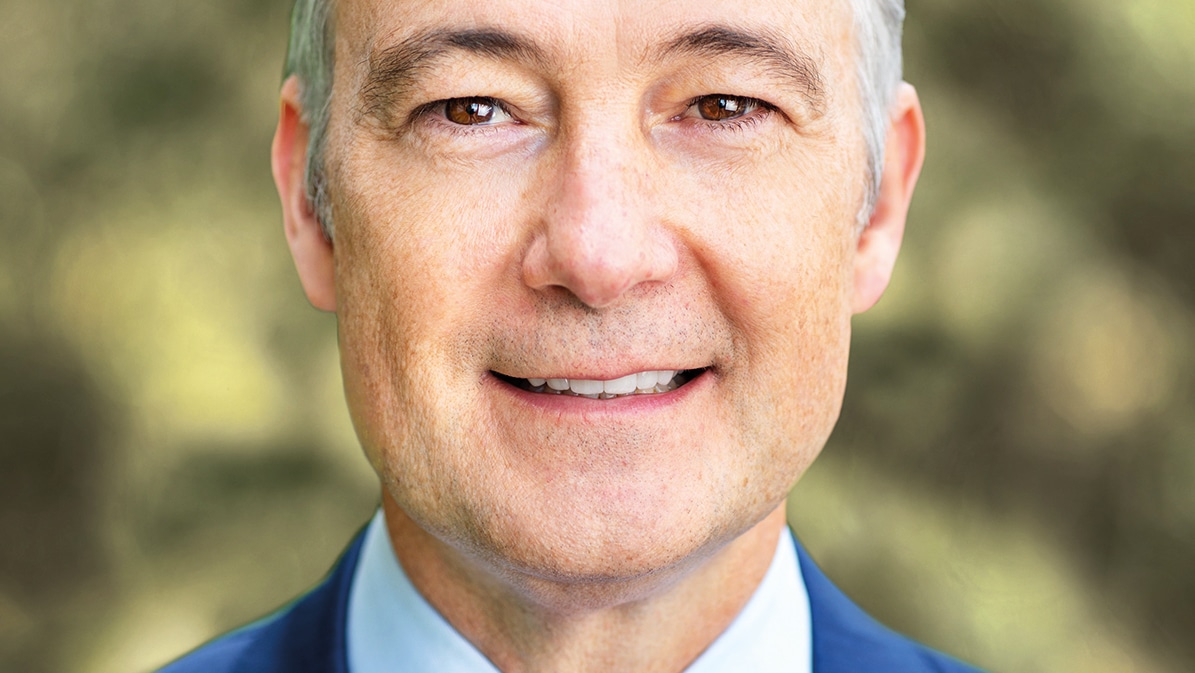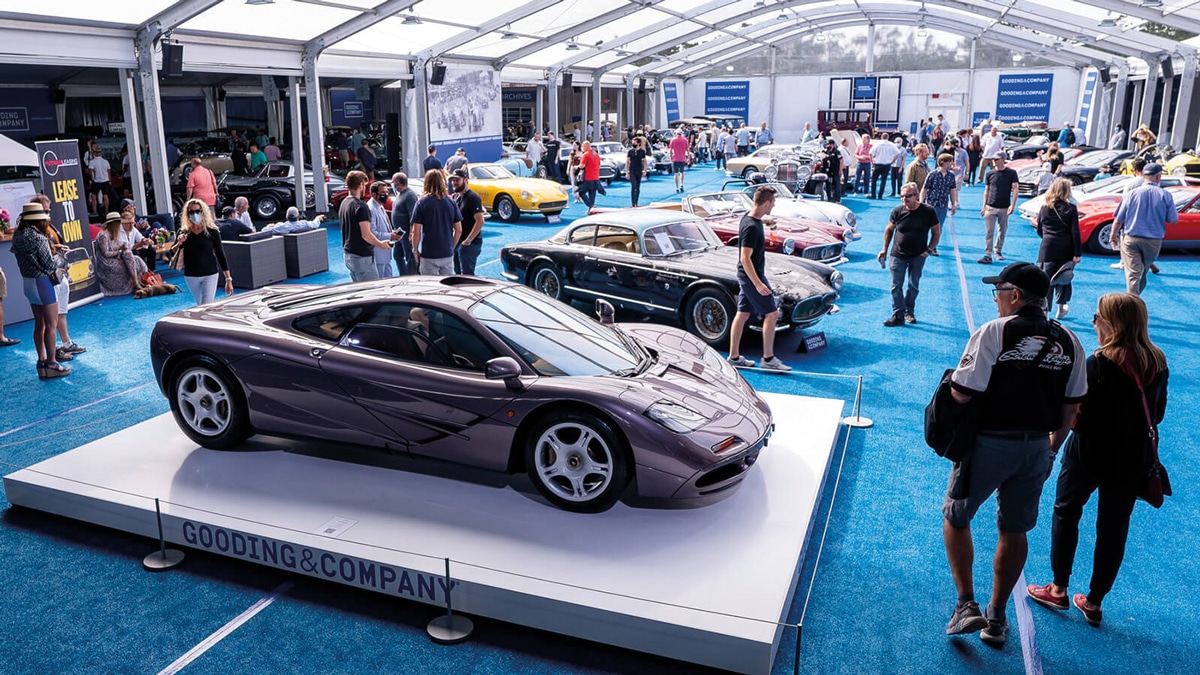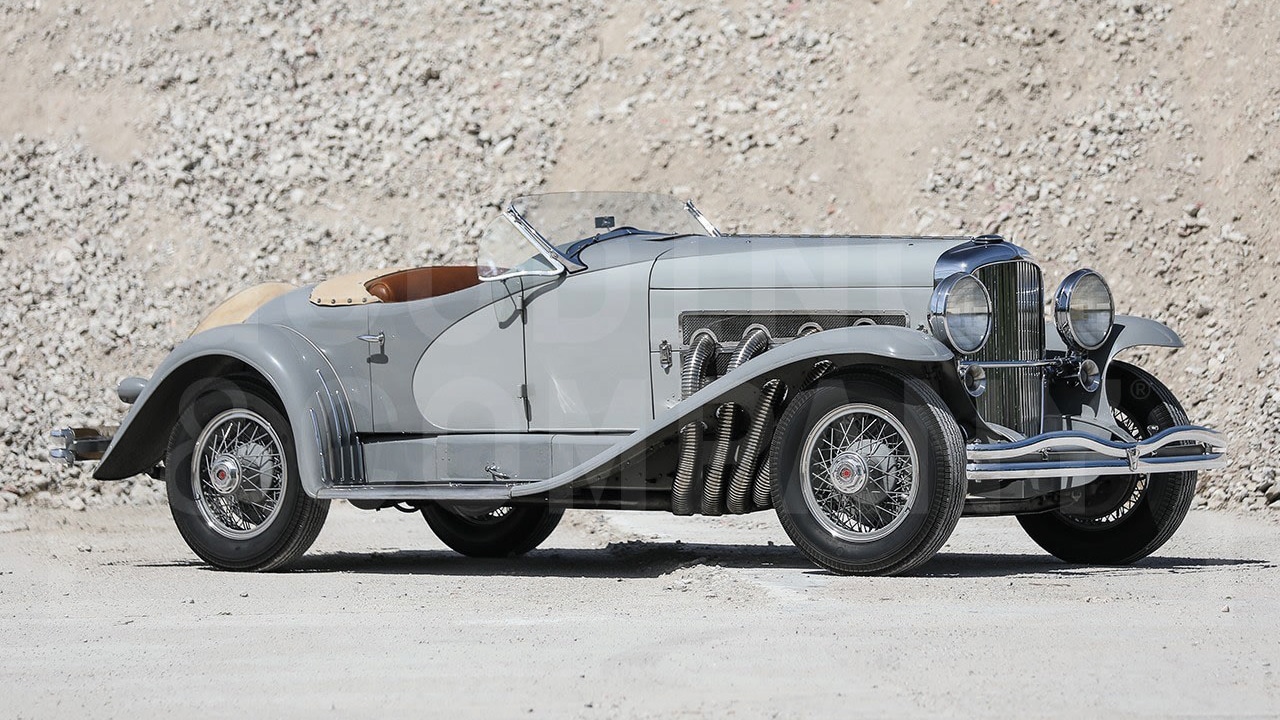Q&A with David Gooding, auction house president
The president of official auction house Gooding & Company takes our questions

Mike Maez
In 2003 David Gooding was successfully making his way as a collector car broker when an unexpected phone call led to him running the auction at the Pebble Beach Concours. While making preparations for what will be Gooding & Company’s 20th appearance as the event’s official auctioneer, the firm’s president and founder took time out from his schedule to tell Motor Sport about his lifelong journey through the world of classic automobiles.
MS: At what age did you become interested in cars?
DG: I can honestly say my first memory dates back to when I was about three years old and the celebrated car designer Strother MacMinn pulled up outside our family home in a bright red Jaguar XK120 roadster. I just remember being mesmerised by both the colour and by its flowing lines.
MS: Is there a family background in cars?
DG: Very much so – my family knew Strother MacMinn because my father worked as a car collection curator. He became interested as a youngster after he began attending vintage races in Santa Monica and, when he was at college in southern California, he had a job car-spotting for the Bill Harrah collection. He had to find suitable cars and write reports on them. He went to work for the collection full-time at the age of 22, and also worked for The Nethercutt Collection [in California] and the Crawford Auto-Aviation Museum in Cleveland, Ohio. So you could say I grew up in and around car museums.

MS: What was your first car?
DG: The first one I had the use of was a family car – the old Jaguar XK140 fixed-head that my father bought in around 1961 and in which he and my mother went on honeymoon. He was the second owner, and he let me use it during high school. We still have the car, which is black with a red interior. I remember getting into it outside the Nethercutt Museum in LA’s San Fernando Valley where temperatures often exceed 100°F… the black paint meant it was like getting into an oven! When I went away to college in upstate New York, I bought a VW Beetle. A simple, fun, reliable car that was ideal for the New York winters because it was very good in the snow.
MS: When did you begin working in the collector car world?
DG: When I finished college I got a job in the film industry doing production work – but I found the whole process of film-making way too slow. Then I heard there was an opening at Christie’s because Robert Brooks had left in order to set up on his own and had taken the entire staff with him. I was interviewed by Colin Crabbe [celebrated racing driver and car sleuth] and I was given the job. We were based in California because, at the time, Christie’s was the official Pebble Beach auction house. But as part of the job I travelled to London frequently where we also held regular sales.
MS: How valuable to your future was the experience of working for Christie’s?
DG:Very valuable indeed, but for an unexpected reason. I started there in the late 1980s at the peak of the collector car market – a time when no one realised it was actually cresting and about to crash. Although everything subsequently began to crumble, it was an ideal period in which to cut one’s teeth because you learned how to survive when conditions were really tough.
MS: How and when did you decide to establish your own business, Gooding & Company?
DG: I stayed at Christie’s for 11 years, and then went to work for the Canadian auction house RM. It was a small firm back then, and it wanted to become more like a Christie’s-style operation. I stayed for three-and-a-half years and it was a very good learning experience because the RM people were very hungry, very motivated and extremely creative – but the style of business didn’t really suit me, so I left and decided to set-up a brokerage firm with my wife, Dawn.
MS: How did that evolve into auctioneering?
DG: Well – that was unexpected. One day I was just sitting in my tiny office in the laundry room at home when I took a call from the Pebble Beach organisers. Sandra [Button] and I had worked together for many years because of the Christie’s connection, so I knew the organisation very well. I was told that Christie’s had decided not to renew the contract as official concours auctioneer and that it was mine if I wanted it.
Without really thinking, I just said “yes” – even though we didn’t actually have an auction company! I remember sitting there, looking at the washing machine and the clothes dryer, thinking about the fact that we didn’t even own a computer. I called Dawn and, although she was totally taken aback when I told her what I had done, she said we could make it work. At the time she was with the marketing department at Universal Pictures, so had a really good understanding of what it takes to create and promote a business – the success of the Gooding & Company brand has been entirely down to her.
MS: After you staged the first Pebble Beach auction in 2004, did you anticipate that the collector car market was set to grow as dramatically as it did?
DG: We had absolutely no idea that it was set to take-off so dramatically and, from the outset, the reason we wanted to be involved in the market was because we love it. Our first Pebble Beach sale grossed around $12m and we were absolutely over the moon. If we held a sale today that made that amount of money, we’d probably be out of business! The highest total we have achieved to date is the $129m the sale made in 2016, with the top-selling Pebble Beach car being the ex-Gary Cooper Duesenberg SSJ, below, which fetched $22m in 2018.

MS: What do you consider to have been Gooding & Company’s most notable sale?
DG: We hold the record for brokering the private sale of a Ferrari 250 GTO – the car bought by WeatherTech Raceway CEO David MacNeil. The price has not been officially revealed, but it has been widely reported at $70m. The most notable car we have auctioned, however, is probably the 1935 Duesenberg SSJ speed record breaker, known as the Mormon Meteor, which we sold at our very first Pebble Beach auction [for $4.5m]. The Gary Cooper SSJ holds the record for most expensive American car sold at auction.
MS: What aspect of the business are you most proud of?
DG: I think the thing that gives us the greatest pride is the niche we have carved out – people recognise the integrity of the business and they trust us. That’s probably down to a strategy that’s based on the ethos of knowing what we are selling really, really well.
It’s vital to understand every lot intimately and, while it makes sense from a business point of view to hold a sale or more every month, I just don’t believe it’s possible to really know every individual car that way. That’s partly why we only hold three live sales per year, plus individual estate sales when the opportunity arises. We might add one or two regular venues at some point in the future, but only if they feel like the right fit – but that would probably be the maximum.
MS: In addition to your live sales, you also hold occasional Geared Online auctions. How did this come about?
DG: Like many auction houses, we had to react quickly when Covid prevented live sales. Geared Online was born, and it has been really wonderful. We use the sales, which happen as and when the time is right, to sell less-valuable items – but our online auctions differ from others because we take possession of every item so that it can be evaluated, researched and properly catalogued. If you really want to know what you’re selling, there’s no other way.
